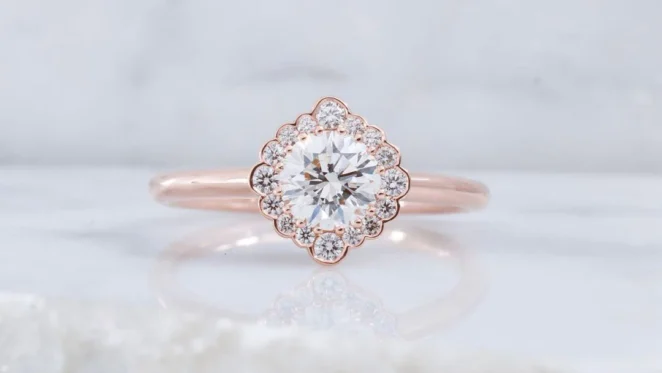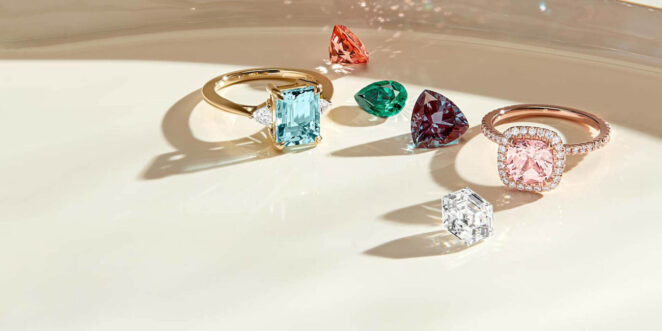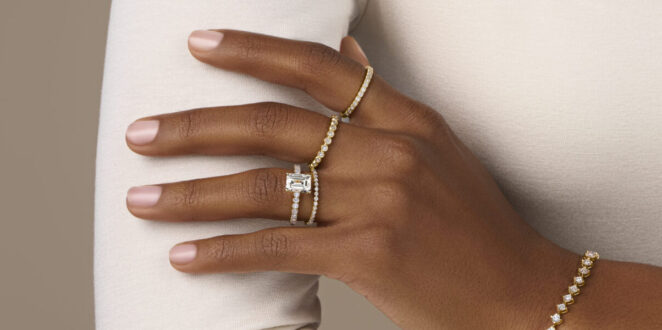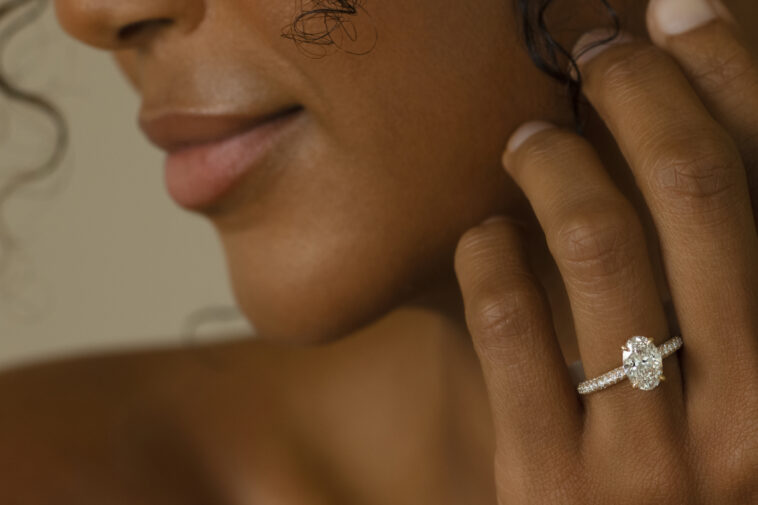Engagement rings symbolize the love and commitment between partners. It’s no surprise that much thought, effort, and financial investment goes into choosing the perfect ring.
Understanding the various elements that contribute to the cost of an engagement ring is essential in making an informed decision. This comprehensive guide delves into the world of engagement rings, discussing different factors from carats to craftsmanship that drive the prices up.
The Centerpiece: The Gemstone

Type and Quality
The choice of gemstone significantly influences the cost of engagement rings. Diamonds, known for their brilliance and durability, are the most popular choice but also one of the most expensive. The price is often determined by the Four Cs: cut, color, clarity, and carat weight. Each of these factors affects the quality and appearance of the diamond and, subsequently, its cost.
- Cut: Refers to how well the diamond is crafted, affecting its brilliance.
- Color: Graded from D (colorless and rare) to Z (light yellow), with D being the most expensive.
- Clarity: Measures the internal and external flaws of the diamond.
- Carat Weight: Refers to the size of the diamond, with larger stones being more expensive.
Alternative Stones
Opting for alternative stones like moissanite, sapphire, or other gemstones can reduce the cost. These stones each have unique characteristics and aesthetics, offering a range of options for different preferences and budgets.
The Setting and Metal
Choice of Metal
The type of metal used for the band and setting impacts the cost. Platinum is highly durable and hypoallergenic, making it a premium choice. Gold, another popular option, varies in price depending on its purity (24k being pure gold), with 18k and 14k being more affordable alternatives.
Craftsmanship
Handcrafted and custom-made settings that require meticulous attention to detail contribute to higher prices. The complexity and uniqueness of a design can demand skilled craftsmanship, adding to the overall cost.
Brand Prestige

Renowned brands and designers often price their engagement rings higher due to their reputation for quality, design innovation, and customer service. Opting for a designer ring can mean a more significant investment.
Customization
Custom-designed engagement rings, tailored to personal preferences for design, gemstone, and metal, often come with a higher price tag. The additional labor, design work, and unique materials can add to the cost.
Geographic Factors
The location of purchase can impact the price, with metropolitan areas and high-end shopping districts potentially having higher prices due to increased operational costs and clientele willing to pay a premium.
Trends and Demand
Current trends and market demand also play a role. Popular designs, gemstones, and metals may carry a higher price due to their increased demand in the market.
Navigating Costs: Potential Savings Strategies
Consider Less Traditional Stones
Choosing less traditional gemstones can offer unique and personal aesthetics while keeping costs down.
Simplify the Design
Opt for simpler, classic designs which can be both elegant and more affordable.
Explore Pre-Owned Options
Vintage or pre-owned rings often have distinctive charm and history, usually available at a lower cost.
Buy Online
Online retailers may offer a broader selection and more competitive prices due to lower operational costs.
Conclusion: Making an Informed Decision

Understanding the various factors influencing the cost of engagement rings is crucial in making a budget-conscious and satisfying decision.
Prioritize elements that are most significant to you and explore cost-saving strategies to find a beautiful engagement ring that aligns with your budget and personal style. The emotional and sentimental value of the ring, symbolizing love and commitment, is priceless, transcending the material and financial aspects of the purchase.




